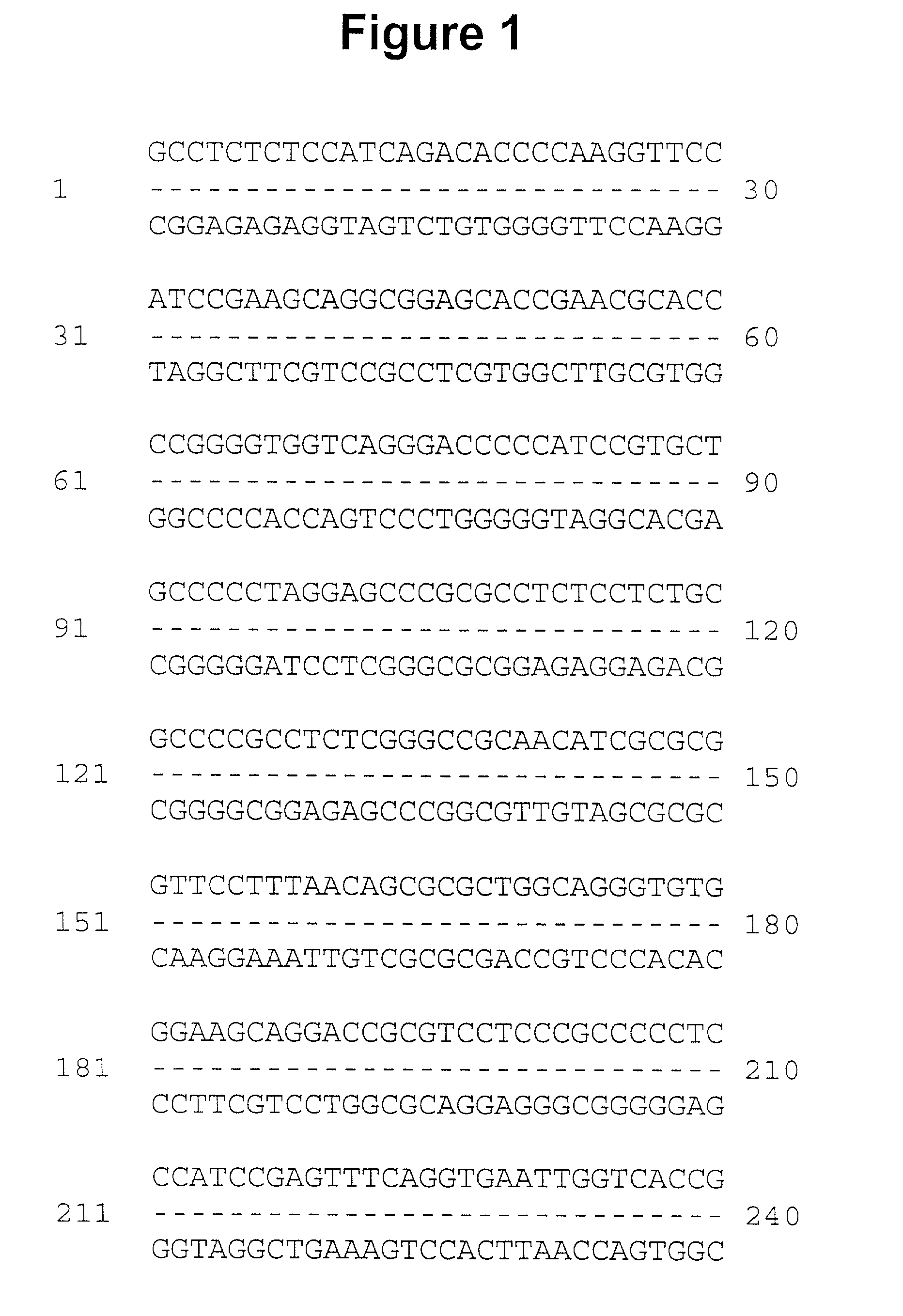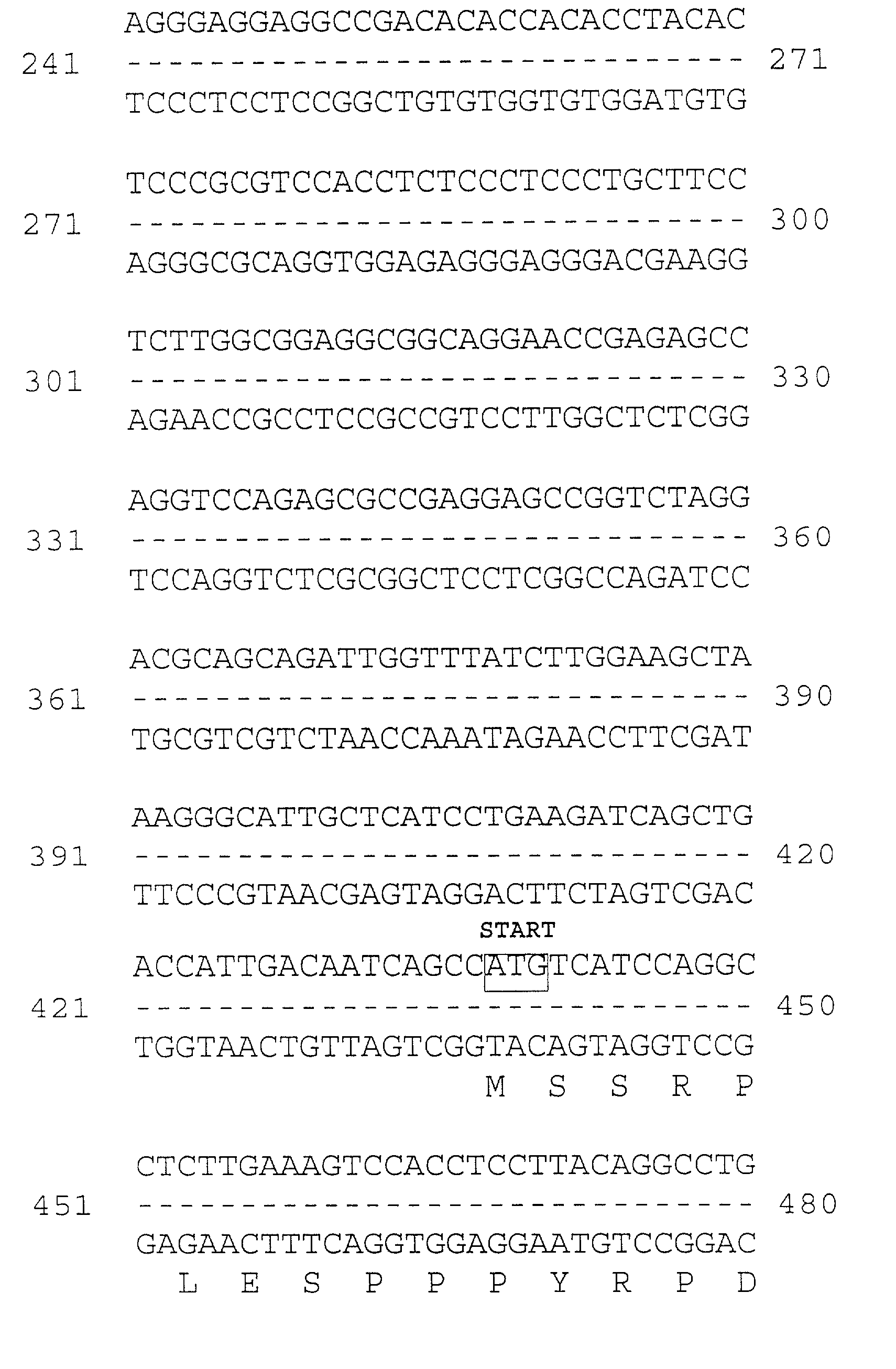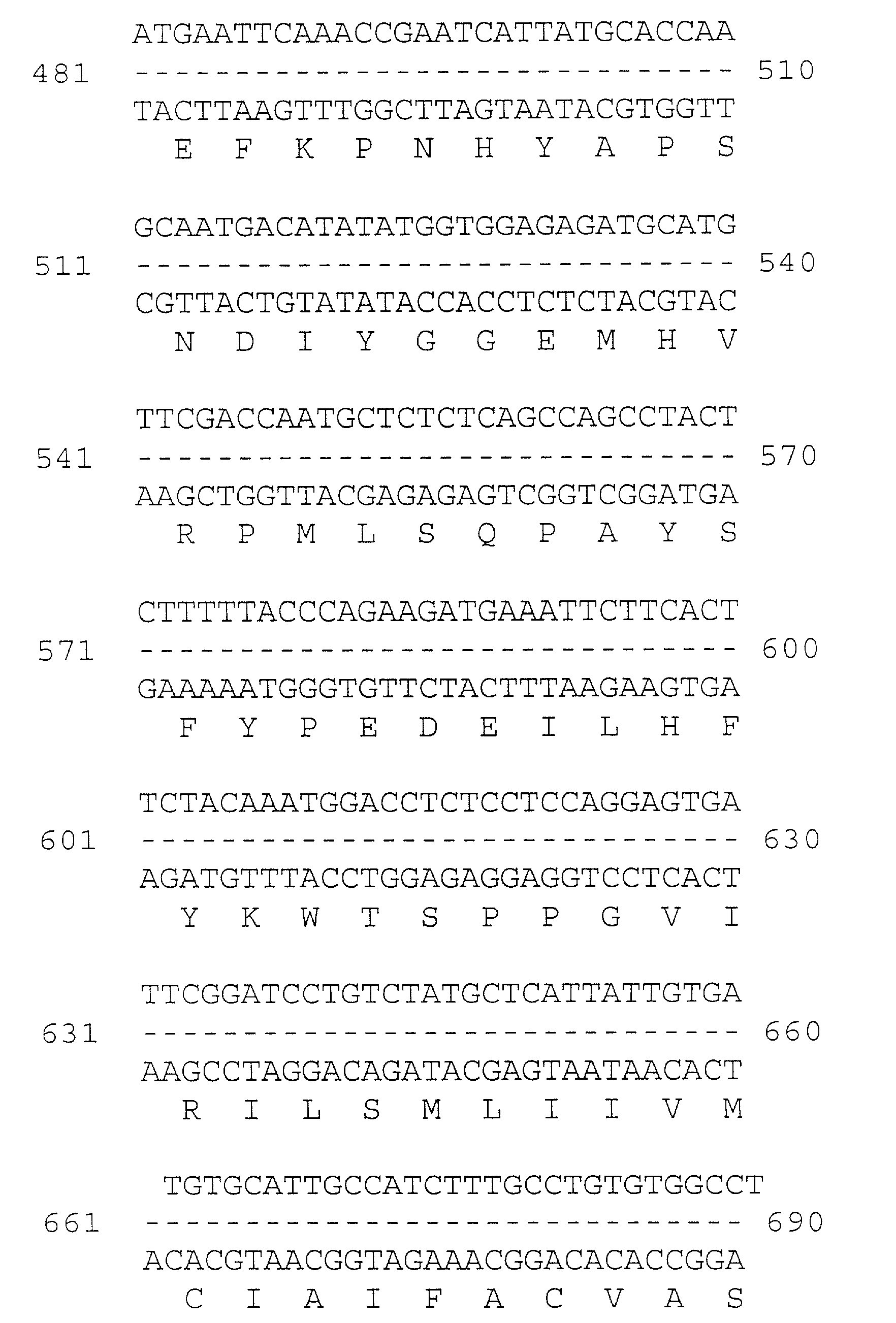Human occludin, its uses and enhancement of drug absorption using occludin inhibitors
a technology of occludin and occludin, which is applied in the field of human occludin, its uses and enhancement of drug absorption using occludin inhibitors, can solve the problems of limited drug absorption across epithelial and endothelial tissue, achieve the effects of enhancing transmucosal and transendothelial drug delivery, eliminating toxic effects, and delivering larger materials
- Summary
- Abstract
- Description
- Claims
- Application Information
AI Technical Summary
Benefits of technology
Problems solved by technology
Method used
Image
Examples
example 1
[0052] To clone the human occludin cDNA sequence, a short sequence homologous to the chicken cDNA sequence was observed fused to an unrelated cDNA presumed to encode the product of the NAIP gene in individuals afflicted with the genetic disease Spinal Muscular Atrophy (Roy, N., et al., Cell 80: 167-178 (1995)). It was assumed this represented a fragment of human occludin, and this sequence information was used to clone the full-length human occludin cDNA using standard techniques. Human RNA was reverse transcribed and amplified with oligonucleotide primers within the region homologous to chicken occludin. The expected amplification product was cloned and used to screen a human liver cDNA library, in a phagemid vector, using standard hybridization methods.
[0053] Multiple overlapping cDNAs were isolated, sequenced, and encoded the full-length occludin cDNA presented in FIG. 1. The deduced amino acid sequence show about 49% identity and about 66% similarity to chicken occludin. The two...
example 2
[0054] This example shows that occludin confers adhesiveness when expressed in fibroblasts.
[0055] cDNAs, Antibodies, Peptides and Cell Lines Employed
[0056] The 675-nucleotide occludin sequence found in the untranslated region of the human neuronal apoptosis inhibitory gene (Roy, N., et al., Cell 80: 167-178 (1995)) was used to design PCR primers, and reverse transcription-PCR was performed using polyA.sup.+ mRNA from Caco-2 cells as template. The resulting cDNA fragment was used to screen a human liver library (Clontech) and a full length cDNA was isolated and sequenced (GenBank Accession U53823). A similar protocol was recently reported by Ando-Akatsuka, et al., cited above, to clone the full-length human occludin, which demonstrates an exact match at the amino acid level to our sequence. The full length sequence was subcloned into the pCB6 expression vector with and without a 15 amino acid tag at the C-terminus. This tag represents the carboxy-terminus of the vesicular stomatitis ...
PUM
| Property | Measurement | Unit |
|---|---|---|
| concentration | aaaaa | aaaaa |
| molecular weight | aaaaa | aaaaa |
| adhesion | aaaaa | aaaaa |
Abstract
Description
Claims
Application Information
 Login to View More
Login to View More - R&D
- Intellectual Property
- Life Sciences
- Materials
- Tech Scout
- Unparalleled Data Quality
- Higher Quality Content
- 60% Fewer Hallucinations
Browse by: Latest US Patents, China's latest patents, Technical Efficacy Thesaurus, Application Domain, Technology Topic, Popular Technical Reports.
© 2025 PatSnap. All rights reserved.Legal|Privacy policy|Modern Slavery Act Transparency Statement|Sitemap|About US| Contact US: help@patsnap.com



